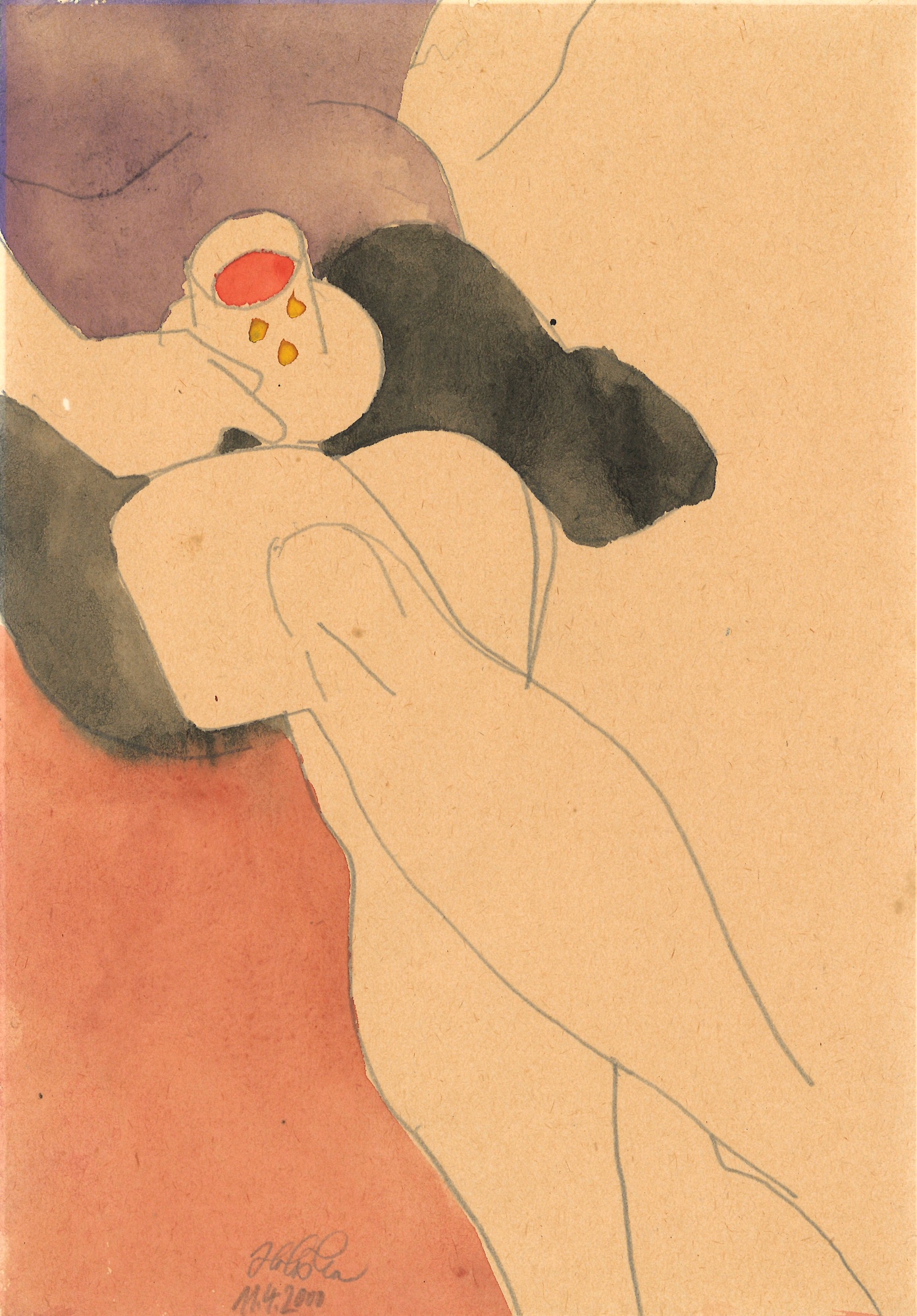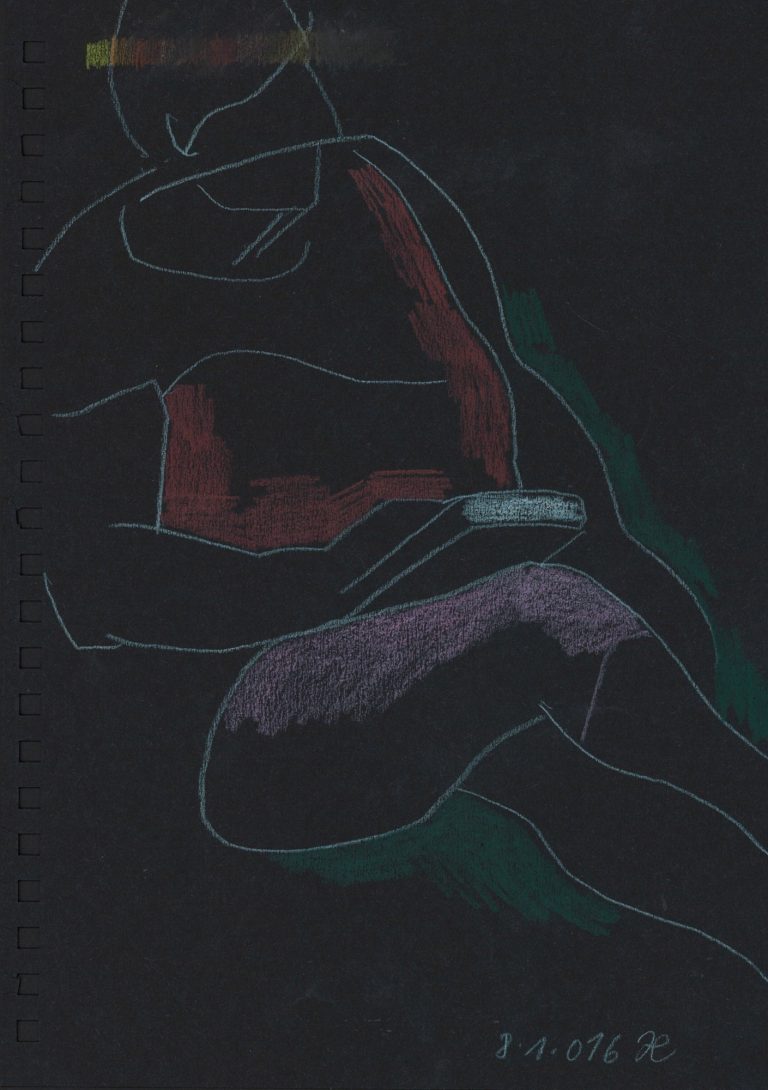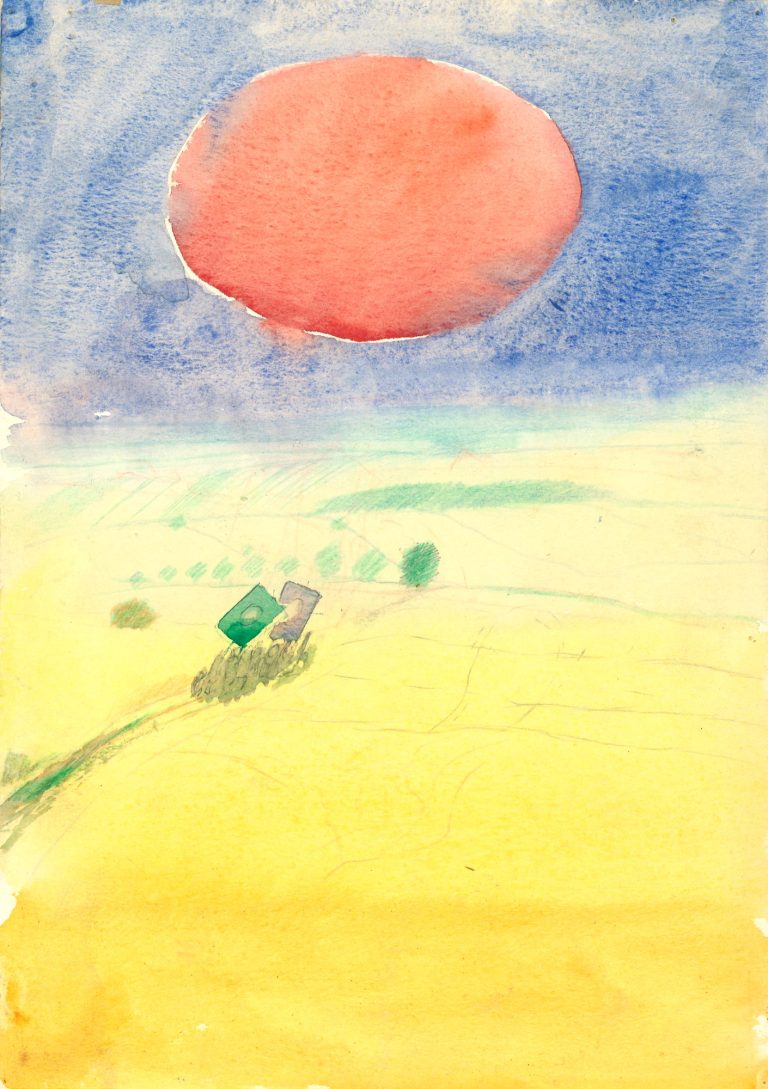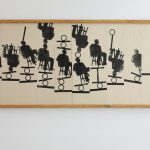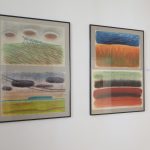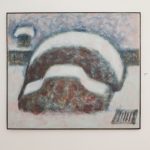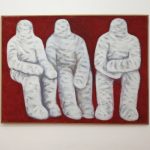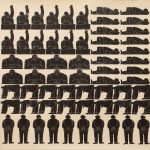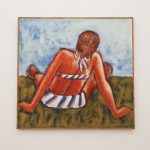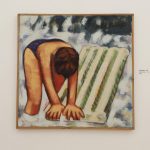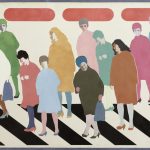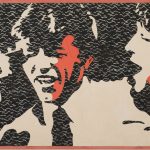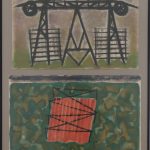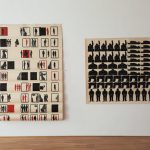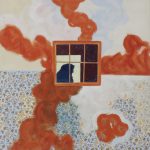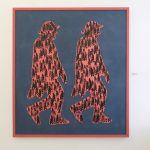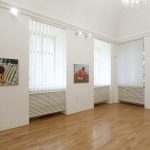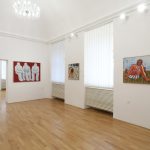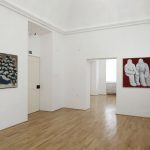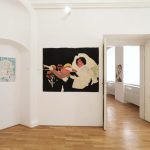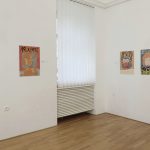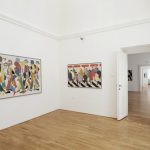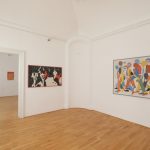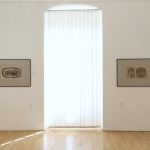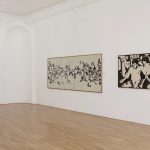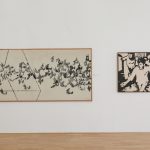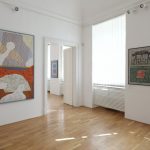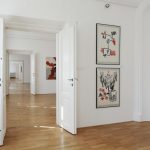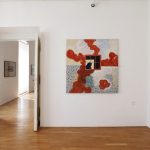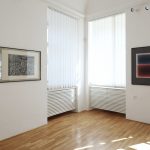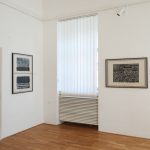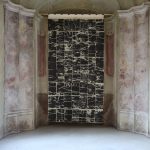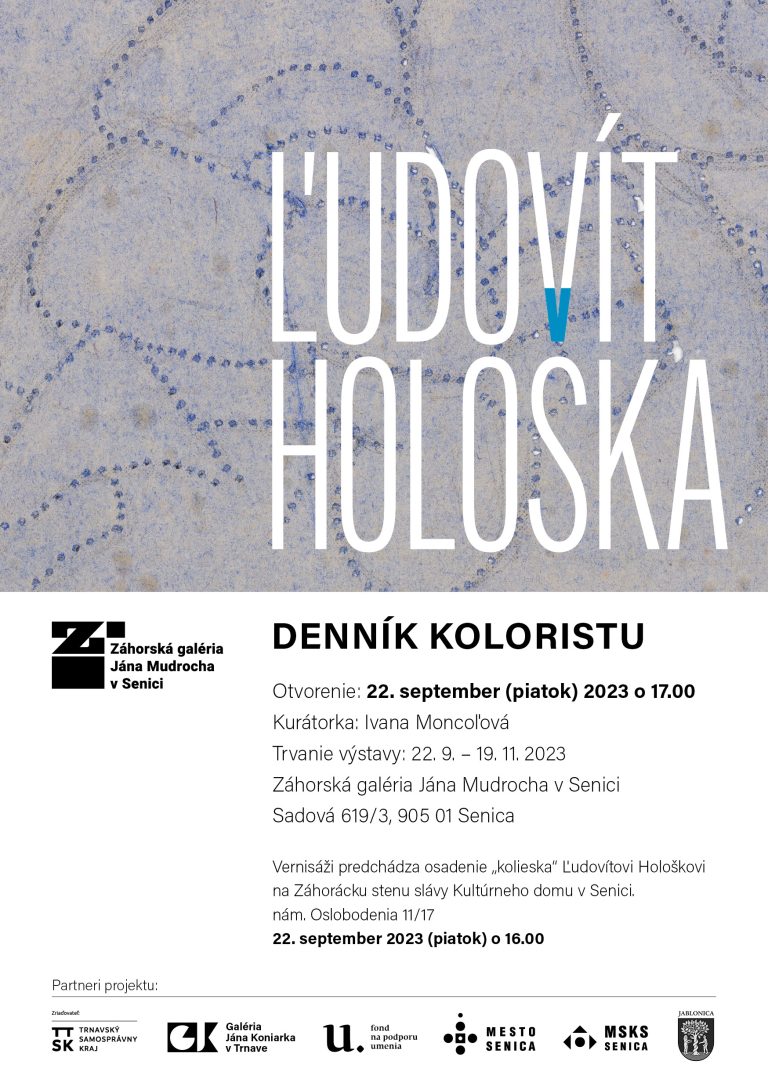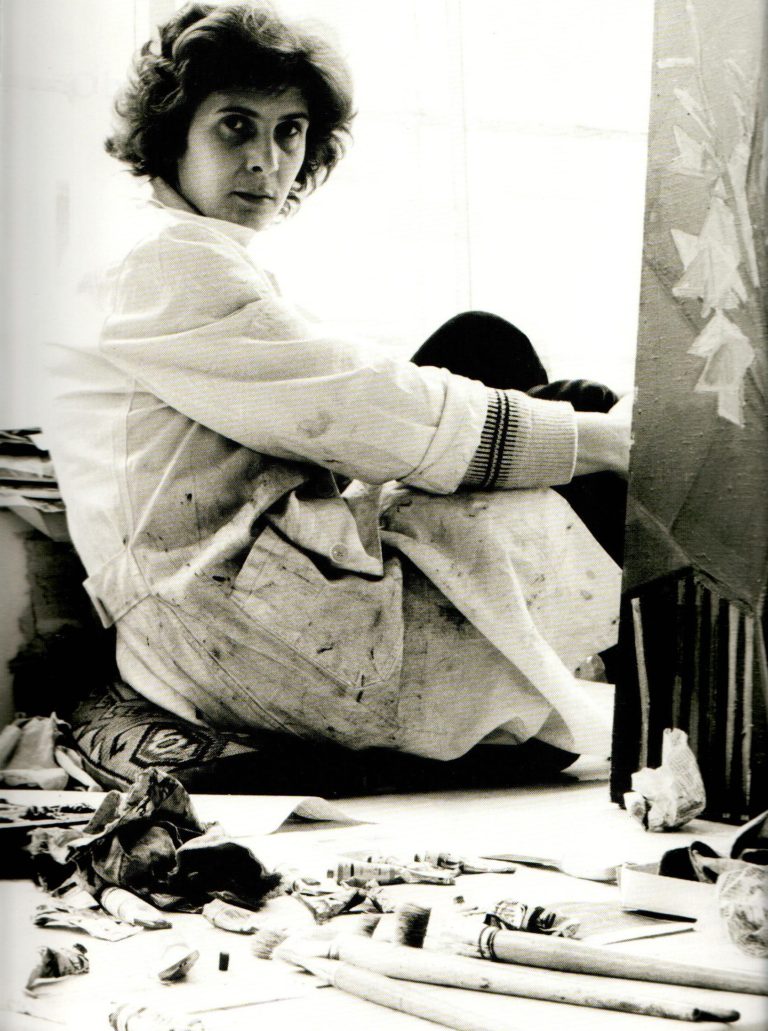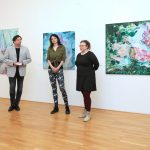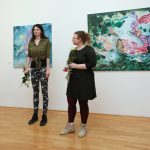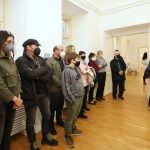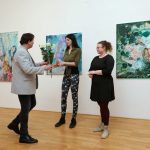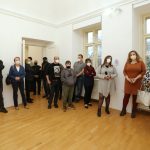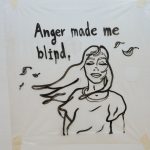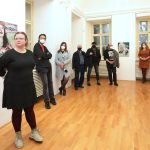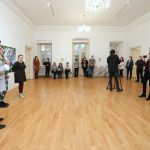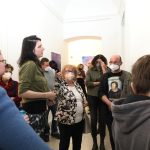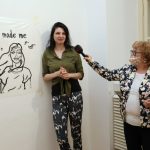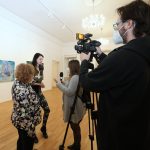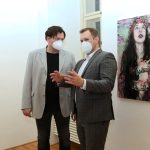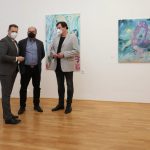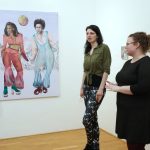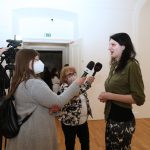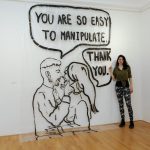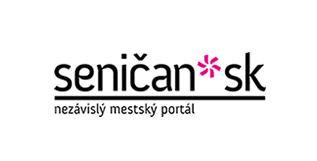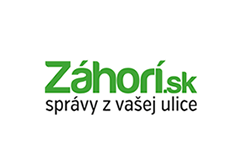Home › Exhibitions › Archive of exhibitions › 2023 › Ľudovít Hološka: Diary of a colour artist
Ľudovít Hološka: Diary of a colour artist
Ľudovít Hološka: Diary of a colour artist
About the exhibition
The exhibition “Diary of a colour artist” is the first comprehensive exhibition presenting extensive works on paper by the artist Ľudovít Hološka (1943). The convolute of works includes drawings from his early high school days through his university days, free drawings – which often served as a thought basis for the realization of painting on canvas, illustrations of books, drawing diaries – records of the surroundings and stimuli of his residence, preparatory drawings intended for the transfer of shapes and basic lines on canvas in preparation for painting, topographical diaries from holidays or art symposia, most often from Poland, drawing diaries as mental maps summarizing the exhibitions that Hološka saw during his lifetime in the world’s gallery institutions, journals – sketches of the ever-repeated motif of the body, drawings with a hacksaw on a hard wooden board. The enumeration of all these aspects of works on paper, drawings in Hološka’s oeuvre is appropriate and important to perceive the scope of his work, especially if we are trying to perceive the more than sixty-year career of a visual artist, perhaps generally known as a creator in the medium of painting on canvas. The exhibition is a representative survey of his work, taking place on the occasion of his life anniversary.
„I want to find a rule so that I don’t have to bother with it anymore, so that I can free myself. I have remained only in the awareness of this wanting. … Right at the beginning of the preoccupation I came to the conclusion that I had to solve everything first with a stain, a line. That’s why I kept trying drawing throughout the whole period“. (1971, quoted from Ludovít Holoska: Diaries 1967-1990)
By more explicitly uncovering more of Hološka’s drawings, we find a comprehensive convolute of works that vary in nature, intent, and how the artist both articulates and inarticulates them in his work, sometimes found in the collections of public galleries where they were partially domesticated during the twentieth century. However, they were less common in curated exhibitions. At the same time, Ľudovít Hološka as an artist conceives of drawing and works on paper as the basis of his free creation, which strongly implies (sometimes years later) the existence of painting on canvas.
Ľudovít Hološka relates himself to drawing, above all to the line, as he says himself. He does so not only as a former student (of Prof. J. Mudroch at the Academy of Fine Arts), but also as a free artist, a frequent illustrator of poetry, but also as a long-time teacher who taught drawing, but also ran a painting studio and generally worked at three universities in Trnava, Bratislava, and Banská Bystrica.
His work is dominated by line and stain (composed of a spectrum of colours) on material such as paper, cardboard, a set of papers in a sketchbook, wood, canvas. It is probably a good idea to make the inevitable connection between line and colour. Ľudovít Hološka is, in fact, going along the lines of modernist image-making, where drawing – the search for shape, the search for colour and colour combination is the fulfilment of the path to what is seen (a certain inner vision). His modernist approach also includes a phenomenological aspect, which makes visible an impulse not normally perceived by the eye in an independent authorial vision. Apart from the line, drawing, colour is important for Hološka as a creator. Colour determines the result of a drawing on paper and is rather a combination of a free stroke of pencil or charcoal together with a spot of colour. Testing colour on the edge of the paper, (or on the back of a sketchbook) or on cardboard in the form of different coloured spots in the colour spectrum (the distribution of the colour tones of the mixed colour into the tonality of the primary colours), a kind of test of the chosen colour vocabulary /spectrum, he calls himself with exaggeration in his internal artistic language as a “colourist’s diary”.
For Ľudovít Holoska, drawing on paper was important from childhood, through his high school youth, to the academic demands of mastering the proportions of the body. However, in the transformative university period at the Academy of Fine Arts in Bratislava, especially towards the end, it took on a free, open character, not as a record of an idea, but as a record of an ideal dialogue between the artist’s eye/vision, the hand, and colour, shape. Whether this “ideal” dialogue has been achieved, the artist reflects on it only after its completion by repeating the theme, the visual perception, again and again, most often for more than a decade, sometimes even for his entire painting life. When asked why, he answers that after finishing it he feels that he could have done it even better. His repeated strokes in pencil or charcoal, perhaps in ink, in white, then the entry of paint into the result is mainly a “resonant surface” for the artist as well as for the viewer.
The exhibition showcases Hološka’s various approaches to working on paper, working with line, pencil and paint, as well as his repeated journeys to image making.
Peter Decheť: Powered by Power, 2020, olej na plátne, 75 x 100 cm
About the author
Ľudovít Hološka (* September 18, 1943, Jablonica) is a Slovak painter, draftsman, illustrator, image theorist, and university educator.
From 1958 to 1962, he attended the School of Applied Arts, and from 1962 to 1968, he studied at the Academy of Fine Arts, specializing in painting in Bratislava, under the guidance of Prof. Ján Mudroch. In 1990, he earned the title of docent, and in 1995, he became a professor. From 1968 to 1974, he worked as a freelance artist, and from 1974 to 1986, he served as a specialist assistant at the Faculty of Education at Comenius University in Trnava. From 1986 to 1988, he worked as a specialist assistant at the Faculty of Architecture at the Slovak University of Technology in Bratislava. From 1988 to 2008, he served as a specialist assistant, docent, and professor at the Academy of Fine Arts in Bratislava. From 1994 to 2001, he was a professor at the Faculty of Education at Trnava University in Trnava. Since 2001, he has been a professor and dean at the Faculty of Fine Arts at the Academy of Arts in Banska Bystrica, where he concluded his teaching career in 2021.
His paintings and drawings are part of several public gallery collections, including the Central Slovak Gallery in Banska Bystrica. He has illustrated more than 80 books and authored the selection of texts on visual art titled “Layers of Form” (1986) and the monograph “Alexander Ilečko” (1998). He has also contributed articles to periodicals such as “Romboid,” “Výtvarný život,” “Profil,” and others. He is a member of the Association of Visual Artists of Slovakia. He dedicates himself to his creative work in the medium of painting, drawing, diary records, and book illustration. He has been an educator to many significant artists who graduated in Slovakia. Throughout his life, he has been devoted to visual perception and symbolic associations in painting and image. He is also involved in curatorial activities and writing about artists and their work. He has contributed with his texts, for example, to the monographs on the works of Ján Berger (RECO, 2014) and Rudolf Fila (GMB, 2016). He lives and works in Jablonica.
Ohlasy v médiách
Teraz.sk, TASR,10. augusta 2022 13:14
V Záhorskej galérii sprístupnia výstavu obrazov Oľgy Bartošíkovej
Kultura.pravda.sk,Pravda, kul 09.08.2022 14:00
Takmer storočná maliarka predstaví svoju tvorbu v Záhorskej galérii
Noviny TV JOJ, 20.08.2022
Mimoriadne jubileum
Nový čas, nezávislý denník, 22.8.2022:
Maliarka Oľga Bartošíková oslavuje storočnicu: So štetcom si rozumie doteraz! Aha, akú krásu tvorí
TV SEN – Senica, 23. 8. 2022
Akademická maliarka Oľga Bartošíková vystavuje v Záhorskej galérii Jána Mudrocha:
Download
Oľga Bartošíková: Zátišie s pohárom, 1976, olej, plátno, 114,0 x 92,0 cm, M 134
Zo zbierky Záhorskej galérie Jána Mudrocha v Senici


